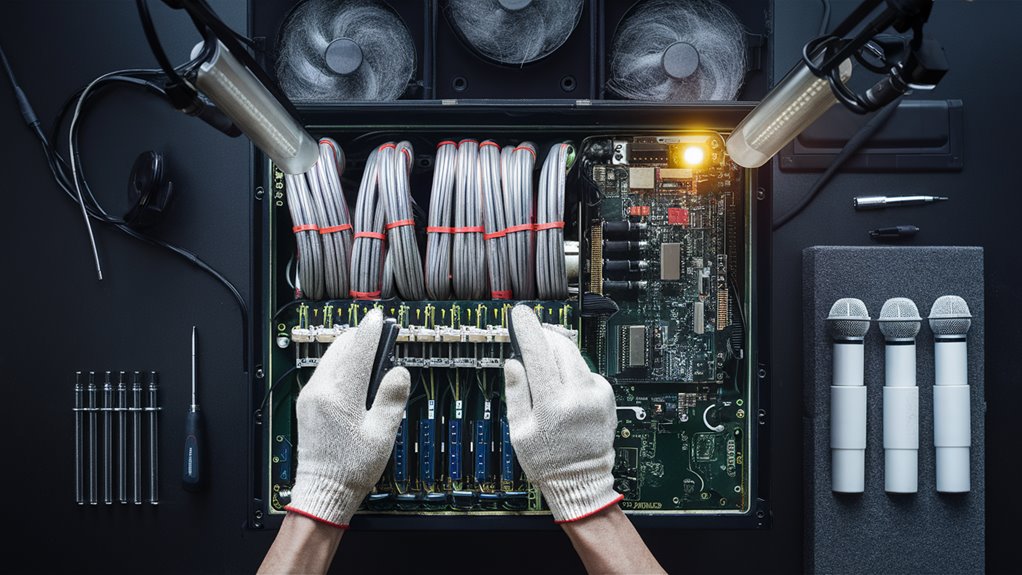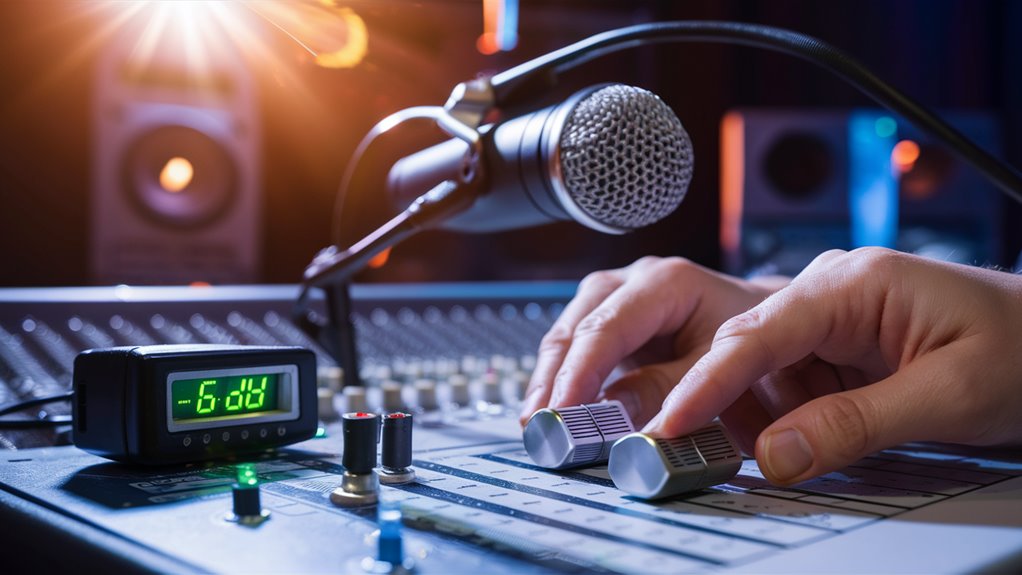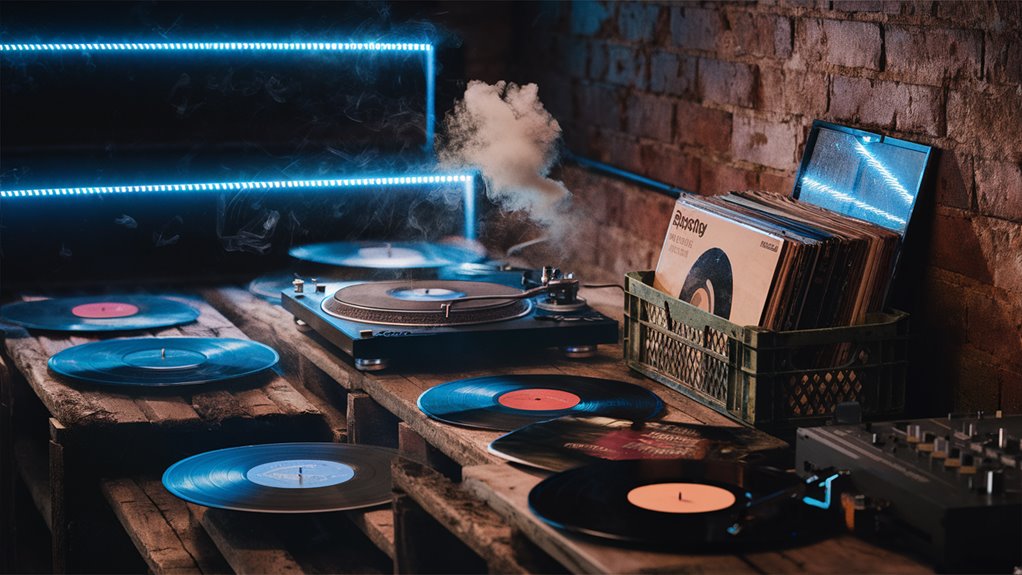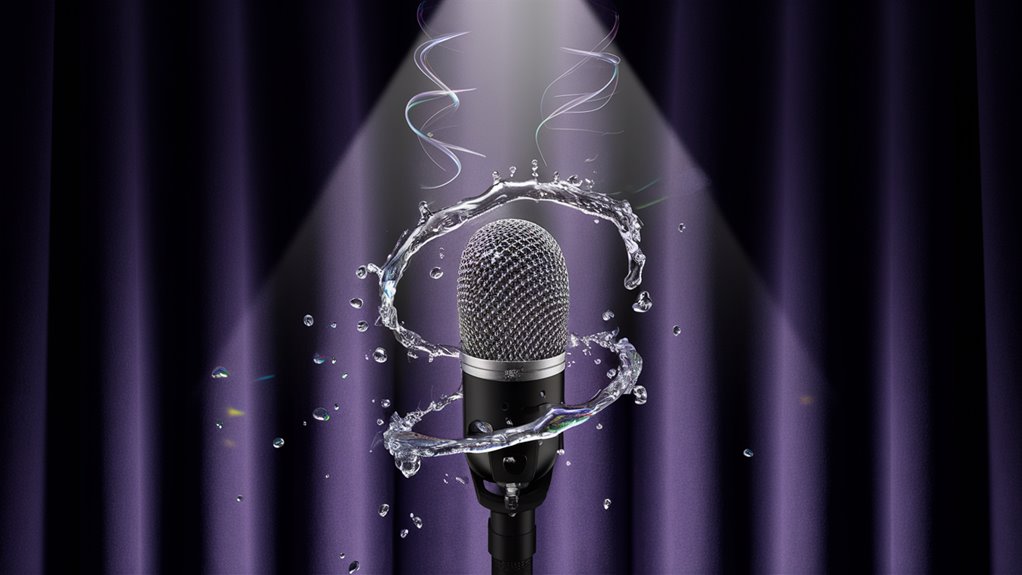Easy Karaoke System Care Guide

Key Steps to Keep Your System Smooth
Take care of your karaoke system by cleaning it often to keep it working fine and sounding good. Clean microphones every week with 70% isopropyl alcohol, and wipe down control panels with a special electronic spray to stop dust and keep buttons easy to press.
Important System Check Routine
Update your software and back up your files every month for a safe setup. Check the sound levels in all parts to keep audio clear and stop any buzz or noise. Karaoke machines work best in cool places, from 60-75 degrees F and with air wetness below 50 percent
Storing and Guarding Your Gear
- Keep microphones standing up in hard cases to make them last longer and work well
- Keep your cords neat and make sure power plugs are tight to stop problems
- Write down care tasks in a log book to spot any trouble early
Detailed Fixing Steps
If you run into trouble, first check power setups and make sure the whole signal path is right. Regular sound checks keep the quality the same. Taking care of both the physical parts and software is key for the best function.
Regular Wiping and Cleaning How-to
Detailed Karaoke System Cleaning Guide
Basic Cleaning Tips
Keeping your karaoke gear clean is a must. Focus on spots that get touched a lot, like microphones, control areas, and cords every week. Turn off the power before you start to clean.
How to Clean Microphones
Use 70% isopropyl alcohol wipes to kill germs on mic parts and where you hold them. Be careful not to let wetness get inside. Clean foam parts once a month with a gentle cleaner, and dry them well before putting them back.
Caring for Control Areas
Wipe control boards and buttons with soft cloths dabbed in special cleaner. Don’t put cleaner right on the machines. For screens, use proper cleaning tools and wipe in one way to stop streaks.
Keeping Cords and Ports Clean
Manage your cords with compressed air to get dust out of ports and connections. Look over connection spots when you clean to find any rust or damage. Keep detailed notes on your cleaning times to help focus on areas that need more care next time.
Software and File Care
Keeping Your Software and Files Safe
What to Update Often
- Software patches
- Song file sorting
- System software updates
How to Update Without Risk
- Save your settings
- Back up your song files
- Keep your current system version safe
Managing Your Song Files
How to Keep Your Songs Neat
- Delete doubles
- Throw out broken files
- Use clear naming rules (Artist – Song Name)
- Check your file list matches your database
- Update unfinished song details
Software Updates Done Right
Important steps for new software:
- Follow steps from the system maker
- Put in updates one by one
- Test everything after each update
- Check mic works
- Look at video quality
- Make sure sound processes are right
How to Keep Everything Working Well
- Controlling software versions
- Backing up often
- Writing down all update steps
- Keeping performance checks
- Running system checks a lot
If needed, use older stable versions from safe backups to keep your system running.
Looking at Your Sound Gear
All About Checking Your Sound Equipment
Starting Your Checks
- Start with amp checks, looking at all connections for loose wires, signs of rust, or other damage
- Test each channel by itself to spot any sound issues or balance problems
How to Test Microphones
- Watch for sound problems like cracking, drops, or weird echoes
- Check cables closely for solid connections, good wire cover, working plugs, clean grille, and windscreen
Making Sure Speakers Work Right
Important speaker checks start with looking at all mounts and safety bits. Test each speaker by itself:
- Listen for odd shaking sounds
- Check how loud they can go
- Look at cone shape
- Make sure crossover bits work
- Check sound timing matches
Checking How Everything Works Together
Full system tests make sure everything works well together. Check the sound path from mic through mixers to speakers. This full check finds problems that might not show up unless everything is running.
Tips for Keeping Equipment Ready
- Set up regular tuning times
- Write down what you find
- Keep detailed care logs
- Use care plans for each bit
- Fix problems as soon as you find them
Making Your Karaoke System Work Again

How to Find What’s Wrong
Challenge your karaoke system issues often come from typical tech problems that need a step-by-step fix. Understand the whole sound path from start to end parts to fix issues well.
Fixing Sound Problems
When There’s No Sound
- Check the power light on the mixer is on
- Make sure all cables are tight
- Look at volume levels and main settings
- Test wireless mic battery life
- Check XLR cables for damage
Sorting Out Sound Quality
- Set input levels right to stop buzzing
- Make sure the impedance matches
- Watch sound levels
Getting Video Right
Handling Screen Issues
- Make sure you pick the right input on the monitor
- Keep HDMI connections tight
- Make sure video format works with your gear
Fixing Lyrics Problems
- Check for broken media files
- Make sure file types work with your system
- Fix HDMI connection issues by reconnecting devices one at a time
Keeping Your System Great
- Update the system regularly
- Check everything often
- Plan ahead for troubleshooting
- Keep an eye on how the software is doing
Making It Sound Even Better
- Keep sound paths clear
- Tune sound levels often
- Make sure your system stays cool
- Plan regular checks of all equipment
Keeping Your Karaoke Equipment Safe
Best Ways to Store Your Stuff
Watch the temp and air wetness to make sure your karaoke gear lasts. Keep your storing spots cool, from 60-75 degrees F and dry (under 50 percent wet air). Too much wet air can hurt electronic bits and speed up rust in key parts.
How to Care for Your Equipment
- Keeping microphones safe means putting them upright in hard cases to stop wetness inside
- Wrap your cords neatly and use covers for speakers and amps to keep them from dust when not in use
Going the Extra Mile for Safety
- When you move your setup, use padded bags or fixed racks for all parts
- Care for batteries by taking them out if you won’t use the gear for a while
- Put the main bit in anti-static bags with packs that suck up damp to protect from moisture
- Write down what you have and check it often to find any wear or damage early
Caring for Your Microphones Well
Keeping Mics Clean
Looking after microphones well helps your sound system stay top-notch. Wipe mics with cleaning wipes each time after you use them, focusing on the part where sound goes in and where you hold them. Once every few months, take off grilles to clean deeply to stop sound issues and bad smells.
Storing Mics Right
- Use the over-under method to keep cords safe when you put them away
- Put little packs that soak up wet in your mic cases to stop rust from wet inside
- For wireless mics, take out the batteries after you use them to stop them from leaking and making a mess
Keeping Mics Working Great
- Check XLR plug-ins and cords each month, fix any that are loose or worn out
- Look after wireless mics by testing how they sound often and cleaning battery areas. Watch for worn-out bits on shock holders and clips
- If there’s a sound issue, try the mic on different channels to see if it’s the mic or something else
Important Things to Remember
- Clean mic surfaces every week
- Check connections and cords each month
- Deep clean parts you can take off every few months
- Test how wireless mics sound regularly
- Store everything safely with stuff that keeps them dry
- Look after batteries in wireless setups
Getting Sound Levels Perfect
How to Make Your Audio Sound Professional
Setting sound levels right is important to get good quality sound and stop common sound problems. Here’s how to do it.
Start Setting Up
- Begin by setting all sound adjusting bits to the middle (at 12 o’clock) and place a sound meter at ear level in the middle of the room
- Play a 1kHz sound through the system and change the main sound level until it hits a normal 85dB
Tuning Each Part
- Adjust each sound source carefully, making sure mic inputs reach just under the max level on mixers when you sing the loudest
- Try different mics and tweak their individual settings while watching for feedback issues. Fix feedback by cutting out trouble sound frequencies with sharp adjustments
Final Tweaks and Tests
Set the balance where voices are a bit louder than the music for clear words and good backup sound. This step makes sure everyone can hear the singing well over the music.
More Advanced Tuning
- Watch how all sounds mix together
- Use compression tools wisely
- Make sure gains are set right all through the sound path
- Set monitor mix levels so singers can hear themselves well
- Make sure there’s enough overall sound space left


